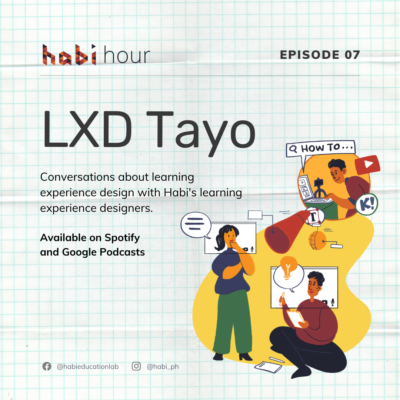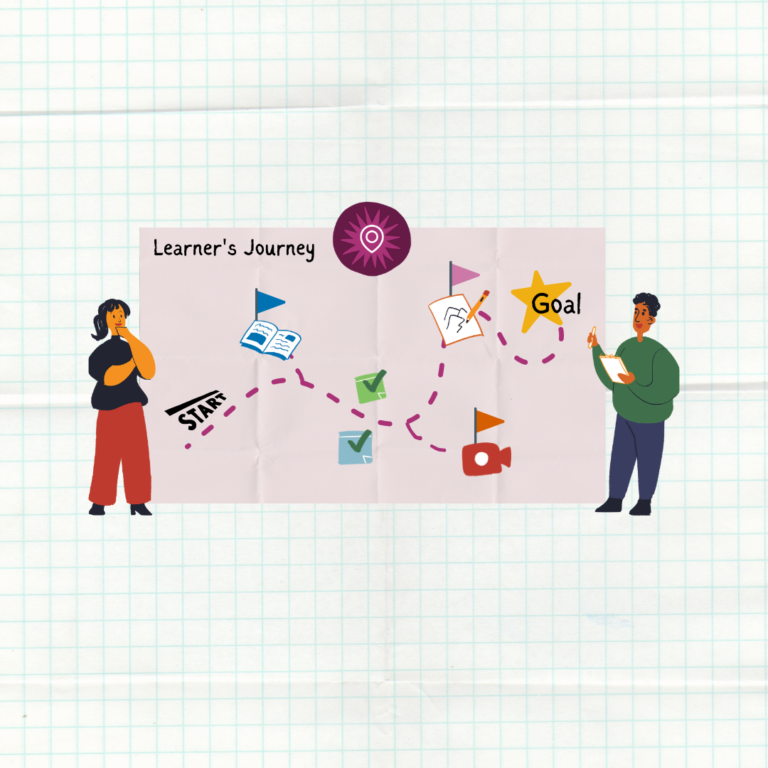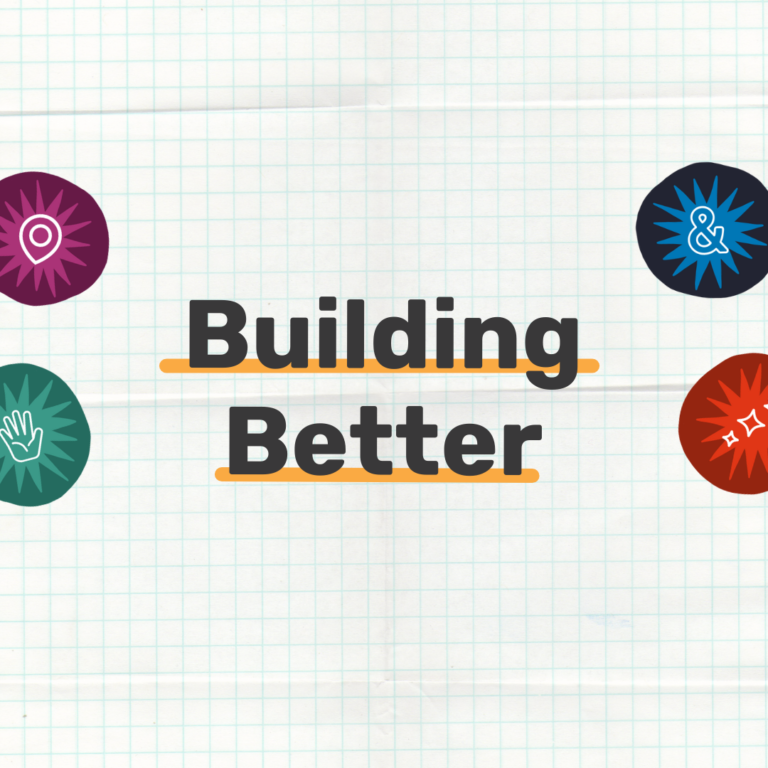Conversations about learning experience design with Habi’s own learning experience designers
Overview
11 December 2020 | 14 min and 42s
6 episodes in and at the end of our Habi ANIMersary celebration, we gathered Habi’s Learning Experience Designers to talk about what #LXDTayo means. Hello, listeners! Meet our Habi family 🙂
Introductions
[Habi Hour Intro]
Audio: JPaul. Mitzi. Patrick. Gerson. Paola. Bernice. Lacey. Amiel. Thessa. Kaye. Chess. Jovi. Kimmy.
CELINA: And I’m Celina, your host for this episode of Habi Hour.
We just wrapped up our Habi ANIMersary celebration with the theme LXD Tayo. But more than just an anniversary celebration theme, malalim ang hugot naming mga LXD o learning experience designers sa pagbigkas ng mga salitang LXD Tayo.
This whole podcast was built with the intention of bringing LXD stories to you. And in this episode, as we near the season ender, you will get to hear the whole team – your Habi team – to share about the value that learning experience design continues to bring to our lives.
What do people say when you tell them that you are a Learning Experience Designer?
KAYE: Usually, ang unang question ay – ano yun?
PATRICK: Ang lagi kong sinasabi ay “we make things that help people learn”
KAYE: Like workshops, trainings, modules. It’s easier to relate it to things that they are already familiar with. So for example, I have friends who work in HR or make presentations. I tell them that those are experiences. But you’re not just designing the experience itself. You’re also designing the different touchpoints like powerpoint presentations, handouts – everything that the learner would have to get in touch with – yun ang dine-design natin.
PATRICK: What’s most fun about being a learning experience designer is that you don’t really know what you’re gonna make by the end of the day.
KAYE: We ensure that through their interaction with these different touchpoints, that’s how learning can happen.
How different is being a Learning Experience Designer from being a teacher or an instructional designer?
GERSON: Tayong mga teachers, we tend to get caught up by curriculum, by syllabi, by content, by topics. And that’s the beauty of having a learning experience design mindset. It complements the idea of thinking of the teacher originally as the sole source of knowledge at nata-transform natin siya into a facilitator or a designer where they are able to get multiple tools that they can curate, organize, or make into a narrative or a playlist, or arrange them in a physical or virtual space. Then they let students explore, giving them the space to take ownership of their learning.
That idea of letting go of control. Sometimes as teachers we tend to have this need to control the lesson plan, the structure of the class, the schedule, or we follow a script sometimes even – in some schools we still have that. When you’re a learning experience designer, you understand that because learners are humans and they are different, they are going to interact in different ways, we let go of that control. We let learning happen instead of controlling the actual experience. We provide experiences so that learning will occur.
What backgrounds make up Habi’s team of Learning Experience Designers?
sonally, ako ay isang Fine Arts major. Specialty ay Visual Communication. I used to work in an advertising agency and research company. Now, I’m a learning experience designer here at Habi. On the side, I do comics.
For some, sila ay nanggaling sa ilang government institutions like CHED. Mayroon din sa aming guidance counselor. May architect. May ECCD teacher. May graphic designer. May instructional design graduate na co-founder ng isang start up. Ilan lang ’to sa aming mga background.
What role does diversity play in a team of Learning Experience Designers?
THESSA: Coming from a non-education background, ‘yong pagiging LXD, para sa akin, para siyang magic everyday. Ang exciting for me na makita kung paano nagme-marry ‘yong educ world at ’yong technical world so that learning happens. Bilang field engineer dati tapos isang LXD ngayon, kita ko na ’yong learning, nangyayari pala siya sa lahat ng pagkakataon at lahat ng lugar, nasa loob man o labas ng silid-aralan.
OLA: I think diversity is really important in learning experience design because as much as we have different kinds of students, we also have to have different kinds of teachers. We also have to have different kinds of learning experience designers because that diversity of skills and experiences can contribute to a more colorful learning environment.
THESSA: ’Yong pagkakamulat ng bawat designer sa iba’t ibang perspektibo at konteksto…
OLA: We have different kinds of people bringing in their own talents and experiences. Say, a software engineer can create an application for learning. A communications person like me can tell a story effectively. A psychologist has tools to understand the human mind. With all of what these different kinds of people can bring to the table, you can have a full meal that offers so much to your learners. There are so many things that they can choose from.
THESSA: Dahil ang learning, para siya sa lahat.
Does empathy make up for experience?
KIMMY: Empathy plays such a big role in our lives in whatever we do. Although as it happens, empathy doesn’t necessarily replace or make up for LXD experience. But it sure compensates for what we don’t know. It tries to encompass broad and holistics strokes of understanding that some experts fail to take note of.
Sometimes as experts, facts become sole bases of truths. But there’s also another side of truths that empathy tries to address which we call ground truths.
How do LXD mindsets contribute to our work culture, systems and processes?
BERNICE: I think the beauty na kayang dalhin ng isang LXD sa work culture is that care and compassion. Kumbaga, para kang nagkakaroon ng relationship with the people that you’re working for through the work that you’re working on.
AMIEL: ’Yong pagiging bukas sa pagde-develop ng user experience ng internal operations. Kasi mahalaga ’yong accessibility ng processes, usability ng systems and even ’yong better communication na nakakatulong sa healthy work relationships ng buong team.
BERNICE: Ikaw bilang LXD, tao ka rin at nafe-feel mo ’yon. Nabibigyan ka ng avenue at space para magmahal and to care for the people and to be kind to them, and share what you know without overstepping because you know it’s coming from a good place that you just really want to help them learn and also be open to learning yourself.
How has being a LXD impacted your personal life?
LACEY: On my relationship with myself, more on reflecting, introspection, and being mindful of how I design my life and how I plan things. May room lagi for flexibility, feedback and suggestions.
CHESS: It came out this year because of the quarantine talaga. I live with my extended family tapos noong nagkaroon ng quarantine, mas madalas talaga kaming lahat sa bahay. We really had to adjust to one another. Mayroon din kaming medical frontliners na kasama sa bahay and mayroon din kaming senior citizens at home so we really had to discuss and collaborate as a family kung ano ’yong protocols namin kapag may mag-go-grocery, ano ’yong procedure namin when we enter the house, when we come home, paano magbabayad ng bills, ano ’yong rotation namin kung kailangan lumabas ng bahay. Noong start ng quarantine, we actually had an exercise together – brainstorming on how to prepare our family for the new normal.
LACEY: Ginagamit ko ’yong mga iba-ibang activities to get feedback. ‘Yong mga roses, thorns, buds. At actually, kahit sa pag-plan ng events namin sa magfe-friends, nakakatawa one time gumawa ako ng inventory para sa kanila para lang malaman kung saan talaga namin gustong pumunta dahil hindi kami maka-decide.
Check Out
CELINA: You just listened to our Habi learning experience designers. Patuloy na nanganarap nang may kasabay na aksyon para isulong ang learning experience design sa Pilipinas at sa buong mundo.
If you’re interested to know more about Learning Experience Design, we invite you to go to our newly-launched page habi.plus to access an online course on Learning Experience Design for free. You may also continue to access Habi Hour, Habi Shop and Habi Live as well as all our other work through our social media pages on Facebook and Instagram, or you may email us at kumusta@habieducationlab.org.
Bilang pagtatapos sa episode na ito, bakit nga ba masarap maging LXD?
CHESS: Ang sarap maging LXD because it helps me be a better person
AMIEL: Kasi araw-araw natututo ka
KAYE: Kung anu-ano ang napapasukan ko
JPAUL: Dahil natututo ka habang may binubuo
BERNICE: Right from the very start, you already know na hindi ka nag-iisa in this world
MITZI: Samut-sari ang naiaambag ng bawat isa sa team
CHESS: To have empathy
THESSA: Maging instrument sa pagkakatuto ng iba’t ibang klase ng tao
JPAUL: Ang sarap sa pakiramdam ‘yong makita sa kanila ‘yong aha moment
BERNICE: And from day 1 you’re continuously learning and you’re continuously experiencing things
PATRICK: Dahil puwede kang maglaro while working
KAYE: Marami akong interests na nape-pursue dahil sa pagiging LXD
CELINA: I found a job that is not separate from my person
GERSON: Dahil nabibigyan ako ng chance to shape the future of the world.
[Habi Hour Outro]



